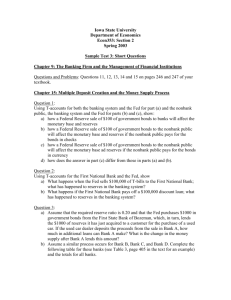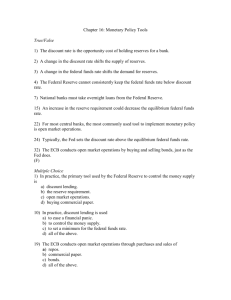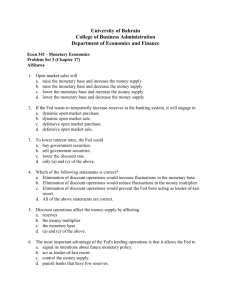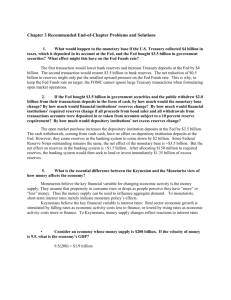Tutorial 7
advertisement
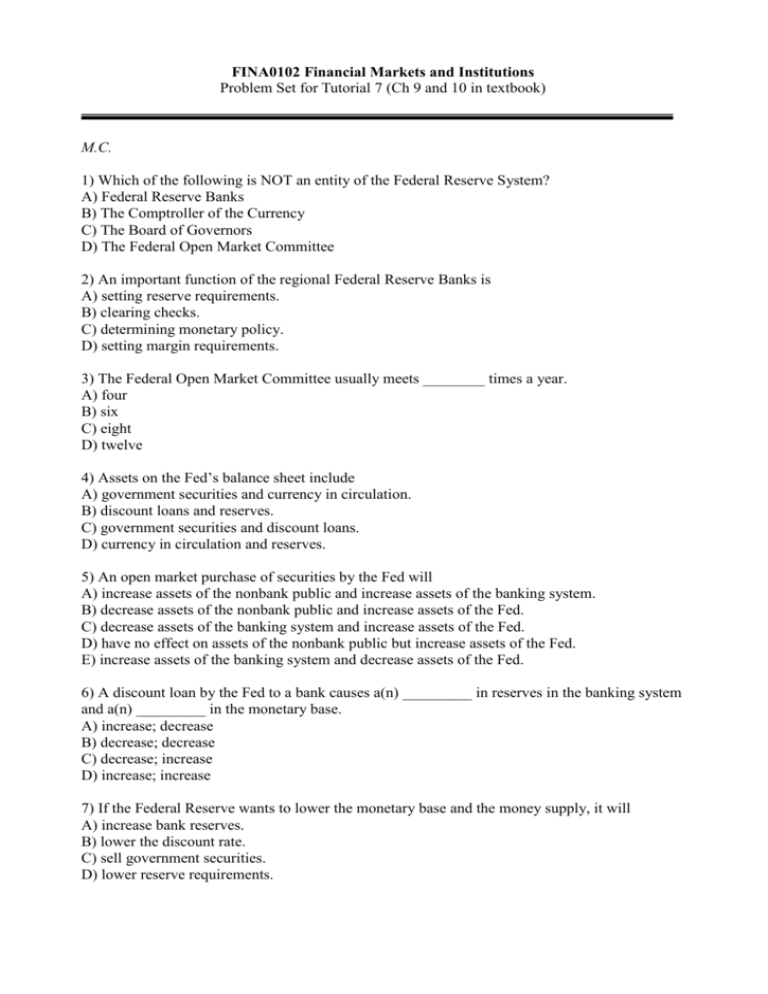
FINA0102 Financial Markets and Institutions Problem Set for Tutorial 7 (Ch 9 and 10 in textbook) M.C. 1) Which of the following is NOT an entity of the Federal Reserve System? A) Federal Reserve Banks B) The Comptroller of the Currency C) The Board of Governors D) The Federal Open Market Committee 2) An important function of the regional Federal Reserve Banks is A) setting reserve requirements. B) clearing checks. C) determining monetary policy. D) setting margin requirements. 3) The Federal Open Market Committee usually meets ________ times a year. A) four B) six C) eight D) twelve 4) Assets on the Fed’s balance sheet include A) government securities and currency in circulation. B) discount loans and reserves. C) government securities and discount loans. D) currency in circulation and reserves. 5) An open market purchase of securities by the Fed will A) increase assets of the nonbank public and increase assets of the banking system. B) decrease assets of the nonbank public and increase assets of the Fed. C) decrease assets of the banking system and increase assets of the Fed. D) have no effect on assets of the nonbank public but increase assets of the Fed. E) increase assets of the banking system and decrease assets of the Fed. 6) A discount loan by the Fed to a bank causes a(n) _________ in reserves in the banking system and a(n) _________ in the monetary base. A) increase; decrease B) decrease; decrease C) decrease; increase D) increase; increase 7) If the Federal Reserve wants to lower the monetary base and the money supply, it will A) increase bank reserves. B) lower the discount rate. C) sell government securities. D) lower reserve requirements. 8) The supply curve for reserves is _________ when the federal funds rate is below the discount rate and _________ when the federal funds rate is above the discount rate. A) upward sloping; horizontal B) upward sloping; vertical C) vertical; horizontal D) vertical; downward sloping 9) The supply curve for reserves shifts to the left and the federal funds rate rises when the Fed A) raises reserves requirements. B) does an open market purchase. C) does an open market sale. D) raises the discount rate. 10) The demand curve for reserves shifts to the left and the federal funds rate falls when the Fed A) decreases reserve requirements or does an open market purchase. B) lowers the discount rate. C) lowers the discount rate or does an open market purchase. D) decreases reserves requirements. E) does an open market sale.

